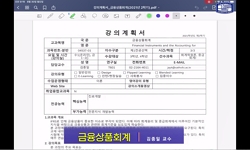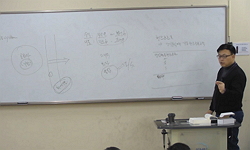본 연구는 2011년부터 도입된 한국채택 국제회계기준(K-IFRS)으로 인한 재무제표의 보고방식의 차이에 주목하였다. 국제회계기준에서는 재무상태표 작성시 유동성배열 및 역유동성배열법을 ...
http://chineseinput.net/에서 pinyin(병음)방식으로 중국어를 변환할 수 있습니다.
변환된 중국어를 복사하여 사용하시면 됩니다.
- 中文 을 입력하시려면 zhongwen을 입력하시고 space를누르시면됩니다.
- 北京 을 입력하시려면 beijing을 입력하시고 space를 누르시면 됩니다.
https://www.riss.kr/link?id=A100290207
- 저자
- 발행기관
- 학술지명
- 권호사항
-
발행연도
2014
-
작성언어
Korean
- 주제어
-
KDC
325
-
등재정보
KCI등재
-
자료형태
학술저널
- 발행기관 URL
-
수록면
165-182(18쪽)
-
KCI 피인용횟수
0
- DOI식별코드
- 제공처
-
0
상세조회 -
0
다운로드
부가정보
국문 초록 (Abstract)
본 연구는 2011년부터 도입된 한국채택 국제회계기준(K-IFRS)으로 인한 재무제표의 보고방식의 차이에 주목하였다. 국제회계기준에서는 재무상태표 작성시 유동성배열 및 역유동성배열법을 선택하여 사용할 수 있다. 국제회계기준에서 강조되는 개념은 원칙 중심(principle-based) 회계처리로, 이는 경영자가 기업의 산업 및 환경에 맞추어 그 실질을 외부정보이용자에게 잘 전달할 수 있도록 경영자의 재량권을 확보하기 위함일 것이다. 하지만 경영자는 자신의 유인(incentive)에 의해 국제회계기준에서 부여한 재량권을 이용할 가능성도 존재한다.
따라서 본 연구는 한국채택 국제회계기준에서 부여한 재무제표의 재량성 있는 배열 및 보고방식이 기업특성과 보고품질에 어떠한 영향을 미치는지를 확인함을 그 목적으로 한다. 먼저 역유동성배열방식으로 재무상태표를 작성하는 기업의 특성을 살펴보았다. 이 기업들은 주로 전체 자산에서 설비자산의 비중이 크고, 부채비율이 낮으며 파산위험이 유의하게 작다는 특징을 보였다.
본 연구를 통해 K-IFRS에서 허용한 재무상태표의 배열방식의 차이가 기업의 특성을 나타내고 있고, 기업의 실질을 보여주고자 하는 유인과 긍정적인 측면을 부각하여 보여주고자 하는 경영자의 의도가 혼합되어 있음을 확인할 수 있다. 한편, 재무제표의 배열 방식이 기업의 특성을 제시하고 있음을 외부정보이용자들은 인지해야 하며, 주어진 정보를 판단할 때 보다 주의를 기울여야 함을 암시한다.
다국어 초록 (Multilingual Abstract)
Companies listed in Korean stock market have adopted International Financial Reporting Standards(K-IFRS) since 2011. K-IFRS allow for a variety of reporting methods for financial reporting. Unlike the past Korean local GAAP(K-GAAP) that allowed for on...
Companies listed in Korean stock market have adopted International Financial Reporting Standards(K-IFRS) since 2011. K-IFRS allow for a variety of reporting methods for financial reporting. Unlike the past Korean local GAAP(K-GAAP) that allowed for only the current arrangement method in the statements of financial position, K-IFRS allow for both the current and non-current arrangement method. In other words, K-IFRS grant the choice between the arrangement methods to allow the managers to express the substance of their companies more fully. The managers, however, may use their discretion granted by K-IFRS for their own incentives(Francis and Wang 2008; Ball 2009).
After the adoption of the K-IFRS, some companies started to announce their assets and debts in the non-current arrangement method. The difference in the reporting methods comes from the attempts that companies make to show their substance better. It may correspond to the purport of the K-IFRS, but it is possible that discretion granted by the incentives of the managers will be used at the same time. Thus, I focus on the difference between the groups with different reporting methods. That is, I investigate whether the differences in the arrangement methods would reflect the characteristics of financial reporting.
I identify a series of characteristics of companies that used the non-current arrangement method for their characteristics. I find that the companies have high percentage of plant and equipment assets in the total assets, low debt ratio, and significantly low bankruptcy risk. It means that the companies emphasize the relative substantiality of their capital by presenting their biggest assets first. This result suggests that managers want to give a positive aspect to information users by using their arrangement method. This result also indicates that information users pay further attention to given information for better making-decision.
목차 (Table of Contents)
- 국문초록
- Abstract
- Ⅰ. 서론
- Ⅱ. 이론적 배경과 가설의 도출
- Ⅲ. 연구방법론
- 국문초록
- Abstract
- Ⅰ. 서론
- Ⅱ. 이론적 배경과 가설의 도출
- Ⅲ. 연구방법론
- Ⅳ. 실증분석 결과
- Ⅴ. 결론
- 참고문헌
참고문헌 (Reference)
1 박홍조, "한국채택국제회계기준(K-IFRS) 의무 적용에 따른 포괄손익계산서 양식 선택에 관한 연구" 한국회계학회 21 (21): 293-315, 2012
2 이근수, "러시아 회계제도의 특성과 한국 회계제도와의 비교에 관한 연구" 23 (23): 57-73, 1994
3 Tversky, A., "The framing of decisions and the psychology of choice" 211 : 453-458, 1981
4 Cuccia, A. D., "The Role of Decision Strategies in Understanding Professionals’ Susceptibility to Judgment Biases" 38 : 419-435, 2000
5 Francis, J. R., "The Joint Effect of Investor Protection and Big4 Audits on Earnings Quality around the World" 25 : 157-191, 2008
6 Pei, B., "The Influence of Information Presentation Order on Professional Tax Judgment" 11 : 119-146, 1990
7 Asare, S. K, "The Auditor's Going-Concern Decision: Interaction of Task Variables and the Sequential Processing of Evidence" 67 : 379-393, 1992
8 Bonner, S. E., "Sophistication‐Related Differences in Investors' Models of the Relative Accuracy of Analysts' Forecast Revisions" 78 : 679-706, 2003
9 Miller, N., "Recency and Primacy in Persuasion as a Function of the Timing of Speeches and Measurements" 59 : 1-9, 1959
10 Trotman, K. T., "Recency Effects: Task Complexity, Decision Mode, and Task-specific Experience" 8 : 175-193, 1996
1 박홍조, "한국채택국제회계기준(K-IFRS) 의무 적용에 따른 포괄손익계산서 양식 선택에 관한 연구" 한국회계학회 21 (21): 293-315, 2012
2 이근수, "러시아 회계제도의 특성과 한국 회계제도와의 비교에 관한 연구" 23 (23): 57-73, 1994
3 Tversky, A., "The framing of decisions and the psychology of choice" 211 : 453-458, 1981
4 Cuccia, A. D., "The Role of Decision Strategies in Understanding Professionals’ Susceptibility to Judgment Biases" 38 : 419-435, 2000
5 Francis, J. R., "The Joint Effect of Investor Protection and Big4 Audits on Earnings Quality around the World" 25 : 157-191, 2008
6 Pei, B., "The Influence of Information Presentation Order on Professional Tax Judgment" 11 : 119-146, 1990
7 Asare, S. K, "The Auditor's Going-Concern Decision: Interaction of Task Variables and the Sequential Processing of Evidence" 67 : 379-393, 1992
8 Bonner, S. E., "Sophistication‐Related Differences in Investors' Models of the Relative Accuracy of Analysts' Forecast Revisions" 78 : 679-706, 2003
9 Miller, N., "Recency and Primacy in Persuasion as a Function of the Timing of Speeches and Measurements" 59 : 1-9, 1959
10 Trotman, K. T., "Recency Effects: Task Complexity, Decision Mode, and Task-specific Experience" 8 : 175-193, 1996
11 Kahneman, D., "Prospect Theory: An Analysis of Decision under Risk" 47 : 263-292, 1979
12 Anderson, B. H., "Primacy Effects and the Role of Risk in Auditor Belief‐Revision Processes" 18 : 75-89, 1999
13 Watts, R., "Positive Accounting Theory: A Ten Year Perspective" 65 : 131-156, 1990
14 Hogarth, R. M., "Order Affects in Belief Updating: the Belief-Adjustment Model" 24 : 1-55, 1992
15 전영순, "K-IFRS를 조기 도입한 기업의 영업이익 구분 표시 및 영업이익 산출에 관한 연구" 한국회계학회 20 (20): 239-275, 2011
16 Ball, R, "International Financial Reporting Standards(IFRS): Pros and Cons for Investors" 36 : 5-27, 2009
17 Altman, E., "Financial Ratios, Discriminate Analysis and the Prediction of Corporate Bankruptcy" 23 : 589-609, 1968
18 Kimmel, P. D., "Financial Accounting: Tools for Business Decision Making. 6th Edition" Willy 2010
19 Burgstahler, D., "Earnings Management to Avoid Earnings Decreases and Losses" 24 : 99-126, 1997
20 Roychowdhury, S, "Earnings Management through Real Activities. Manipulation" 42 : 335-370, 2006
21 Watts, L, "Conservatism in Accounting Part I: Explanation and Implications" 17 : 207-221, 2003
22 Bamber, L. S., "Comprehensive Income: Who's Afraid of Performance Reporting?" 85 : 97-126, 2010
23 Hirst, D. E, "Comprehensive Income Reporting and Analysts' Valuation Judgments" 36 : 47-75, 1998
24 Kahneman, D., "Choices, Values, and Frames" 39 : 341-350, 1984
25 Lee Y., "Cherry Picking, Disclosure Quality, and Comprehensive Income Reporting Choices: The Case of Property-Liability Insurers" 23 : 655-692, 2006
26 Dietrich, R., J., "Asymmetric Timeliness Tests of Accounting Conservatism" 12 : 95-124, 2007
동일학술지(권/호) 다른 논문
-
- 한국국제회계학회
- 유성용(Ryu, Sung Yong)
- 2014
- KCI등재
-
- 한국국제회계학회
- 김명종(Kim, Myoung Jong)
- 2014
- KCI등재
-
- 한국국제회계학회
- ?志花(Zhang, Zhi Hua)
- 2014
- KCI등재
-
- 한국국제회계학회
- 김주은(Kim, Ju Eun)
- 2014
- KCI등재
분석정보
인용정보 인용지수 설명보기
학술지 이력
| 연월일 | 이력구분 | 이력상세 | 등재구분 |
|---|---|---|---|
| 2022 | 평가예정 | 재인증평가 신청대상 (재인증) | |
| 2019-01-01 | 평가 | 등재학술지 유지 (계속평가) |  |
| 2016-02-25 | 학술지명변경 | 외국어명 : 미등록 -> Korea International Accounting Review |  |
| 2016-01-01 | 평가 | 등재학술지 유지 (계속평가) |  |
| 2012-01-01 | 평가 | 등재학술지 유지 (계속평가) |  |
| 2009-01-01 | 평가 | 등재학술지 선정 (등재후보2차) |  |
| 2008-01-01 | 평가 | 등재후보 1차 PASS (등재후보1차) |  |
| 2007-01-01 | 평가 | 등재후보 1차 FAIL (등재후보1차) |  |
| 2005-01-01 | 평가 | 등재후보학술지 선정 (신규평가) |  |
학술지 인용정보
| 기준연도 | WOS-KCI 통합IF(2년) | KCIF(2년) | KCIF(3년) |
|---|---|---|---|
| 2016 | 0.76 | 0.76 | 0.85 |
| KCIF(4년) | KCIF(5년) | 중심성지수(3년) | 즉시성지수 |
| 0.88 | 0.85 | 1.497 | 0.23 |





 KCI
KCI DBpia
DBpia






